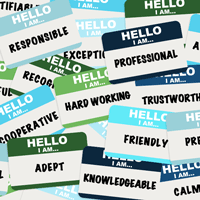All Articles
Signing Savvy Continues to Help Teachers During Global Pandemic
As we have discussed before, most teachers are struggling to get their courses online during these troubled times of the global pandemic. Fortunately, Signing Savvy has tools to help! We ran a promotion at the end of spring to help get teachers up and running with Signing Savvy and the response was overwhelming. Moving forward, we want to continue to help teachers, not only by providing amazing sign language online learning tools, but also helping them get Signing Savvy integrated into their courses and helping their students, parents, and staff also get access to Signing Savvy.
Tips for Teachers: Using Signing Savvy to Transition Your Sign Language Course Online
Teachers that have traditionally taught their courses in a face to face format have encountered an extra challenge during the COVID-19 time period. Whether you are an elementary teacher working with deaf children, a high school teacher meeting the foreign language requirement through American Sign Language, or working at the college or university level teaching ASL or interpreter training, Signing Savvy can be an amazing resource to get your students the information they need in order to continue their learning while NOT directly in front of you.
Tips for Teachers: Creating Lessons Using Word Lists
Word lists are a powerful feature on Signing Savvy that can be utilized as you develop online learning materials. When developing sign language lessons for my online courses, I typically following these steps...
Tips for Parents: Sign Language Learning Tools You Can Use with Kids Home from School
Where I live in Michigan, our Governor has declared all K-12 schools to close from March 16 to April 5. This causes all types of stresses for parents – work, childcare, meals, and financial stresses. Not to mention, feeling fully unprepared for making sure your child doesn’t academically fall behind during this extended time away from school...
Keep Signing! Support During the Coronavirus Pandemic
We know people are nervous as they navigate how to prepare and stay safe during the Coronavirus pandemic. Schools all over the country that have traditionally been taught in a classroom setting are now being challenged to teach their material online with very little time to prepare...
How do you sign… toss?
We get this question all the time, "How do you sign _____?" It is easily the most common question anyone asks. However, it can be a tough question to answer because there isn’t a direct translation for every English word. Figuring out the meaning and context of what someone is trying to communicate is the key to picking the right sign (or signs) to use. So if you provide context when asking the question "How do you sign…" you are much more likely to get an accurate answer. Remember, when in doubt, you should fingerspell the word.
Interpreter Q & A: If the Deaf client isn’t paying attention, should the interpreter keep signing?
This Interpreter Q & A ask: If the Deaf client isn’t paying attention, should the interpreter keep signing as normal? This article is part of our "Dear BC, Interpreter Q & A” series, which answers questions on interpreting and Deaf culture from multiple perspectives.
Signs That Are Close... But Not the Same - Set 12
This article is part of our “Signs That Are Close... But Not the Same” series, which highlights signs that look similar, but have different meanings. The signs discussed in this article include (1) THILLED vs. EXCITED, (2) PRINT vs. NEWSPAPER, (3) SOLD vs. SELLING, (4) SIGNATURE vs. CONTRACT, and (5) GOVERNMENT vs. FEDERAL.
Interpreter 4-1-1: Your Reputation
As a professional interpreter, it is wise to consider your reputation in the community in which you work. Your reputation is formed on a number of important factors. Are you prepared? Are you dressed appropriately? Are you ready to represent the client and profession to the best of your ability? Are you engaged and give back to the community?

















